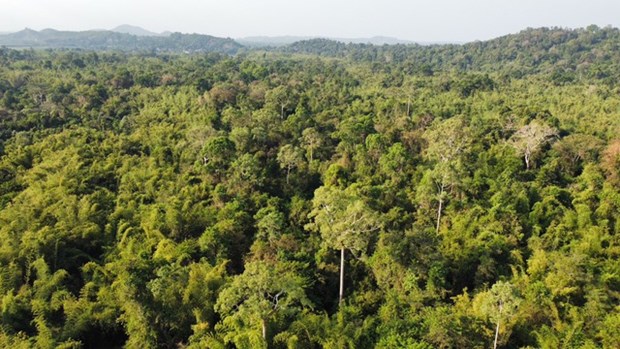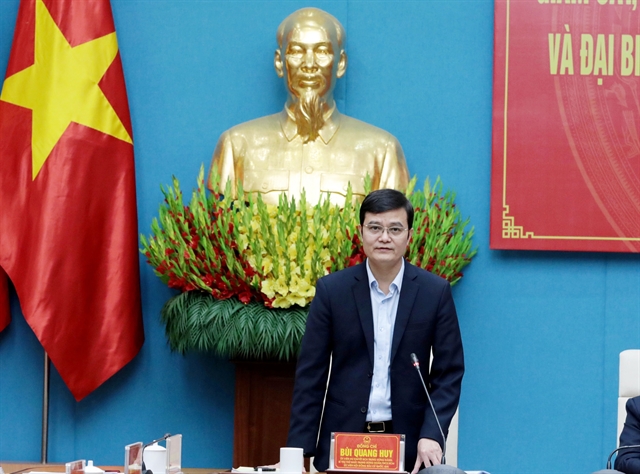 Economy
Economy


|
| Forestry production value has been growing at a stable 4.6% a year, with more than 260,000 ha of land planted with trees each year.— Photo courtesy of VGP |
HÀ NỘI — A seminar took place in Hà Nội on February 27 to discuss solutions to Việt Nam's forestry development strategy in the new context.
The event was co-hosted by the Ministry of Agriculture and Rural Development (MARD), the Vietnam Economic Science Association of Agriculture and Rural Development (VIESARD), the Vietnam Forest Owners' Association, and the Vietnam Timber and Forest Products Association.
Speaking at the event, Deputy Minister of Agriculture and Rural Development Nguyễn Quốc Trị highlighted the achievements made in the three-year implementation of the 2021-2030 forestry development strategy, saying that they contribute greatly to socio-economic development, environment protection, disaster mitigation, proactive response to climate change, national defence and security, and the realisation of national sustainable development goals.
Deputy Director of the Forestry Department Triệu Văn Lục stressed that the structure of forestry production has been shifting in the direction of production chains with increasing added value. Forestry production value has been growing at a stable 4.6% a year, with more than 260,000 ha of land planted with trees each year. Planted forests supply over 70% of wood materials for processing serving both domestic consumption and export. The export value of wood and forestry products averages US$15.8 billion a year.
He said the forest coverage rate has been maintained at 42.02% of the country's area, and forestry activities have created jobs for about 5 million labourers.
Luc mentioned difficulties encountered during the implementation, such as overlapping and inconsistent land use and forest planning, the slow pace of forest leasing and allocation, and inadequate enforcement of relevant regulations, mechanisms and policies, among others.
He also expressed concerns about the limited state budget and inadequate attention of local administrations to forest protection and development.
To tackle these challenges, VIESARD Vice Chairman Nguyễn Văn Tiên proposed that the MARD should promptly improve forestry planning to ensure alignment with national, provincial, and district-level land use planning, allocate land funds reasonably and closely manage the conversion of forestry land use.
He suggested encouraging the concentration of land resources for production and trade, formation of large-scale forestry production, processing and selling chains and investment in forestry and rural areas, especially in remote and mountainous areas.
Delegates at the event proposed solutions to roll out the strategy, focusing on fine-tuning the Forestry Law, building mechanisms and policies to remove barriers, stimulate forestry economy and leverage the multifunctional value of forest ecosystems. — VNS




